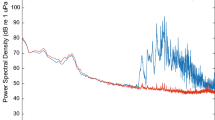Abstract.
The settlement behavior, antennulary biomechanics and morphology were investigated in the intertidal cypris larvae Balanus amphitrite. The very maneuverable antennule of the cyprid consists of four jointed segments, and it is the prime appendage for substratum exploration and final settlement. We recorded several previously undescribed settling behaviors, such as the "tight direction change", for this intertidal species and discovered that the antennulary morphology is modified to facilitate such behaviors. Segment 2 has a modified lateral cuticle, which gives the segment an additional higher degree of maneuverability compared to non-intertidal cirripede species of Rhizocephala. Additional supporting muscle groups were also found in the antennule of our species, which were not found in the investigated rhizocephalan larvae. The results could very well be associated with the higher needs of substratum recognition in intertidal species, due to more heterogeneous habitats such as intertidal rock flats.
Similar content being viewed by others
Author information
Authors and Affiliations
Additional information
Electronic Publication
Rights and permissions
About this article
Cite this article
Lagersson, .N., Høeg, .J. Settlement behavior and antennulary biomechanics in cypris larvae of Balanus amphitrite (Crustacea: Thecostraca: Cirripedia). Marine Biology 141, 513–526 (2002). https://doi.org/10.1007/s00227-002-0854-1
Received:
Accepted:
Issue Date:
DOI: https://doi.org/10.1007/s00227-002-0854-1




